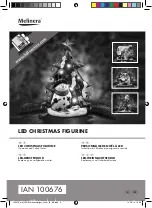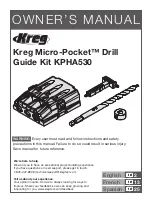
- 2 -
- 3 -
3-
Wall Mounting
Attach the paper template (an accessory) onto the wall,
and drill a 6-mm dia. mounting hole and a cabling hole.
Insert the anchor bolt (an accessory) into the board mount
hole.
Using an allen key, remove the main unit from the base.
Drill through the bushing of the wiring hole, pass the cable
through the hole, and secure the base to the wall.
Connect the cable to the terminal block (see Step 3-3).
Mount the main unit onto the base.
Cautions>>
When mounting the main unit, take care not to trap the
nylon wire loop. Also, take care not to get your fingers
caught.
Check to see that the various settings and operations are
correct.
Caution>>
When the red LED flashes after the power turns on,
this signifies that the system is warming up. Wait for
approximately 60 seconds.
INSTALLATION AND ANGLE ADJUSTMENT
3
()
(2)
(3)
(4)
(5)
(6)
3-2
Inside View of the Base
3-3
WIRING
*: TAMPER terminals to be connected to a 24 hour supervisory loop.
Name
Function
TROUBLE
OUTPUT
Trouble out is used for anti-masking signal. When
an object is placed close to the lens surface, for
a period of more than 00 seconds (approx.), the
IR anti-masking circuit will activate and generate a
trouble signal.
TAMPER
OUTPUT
It is detected when the cover is opened.
It is detected when the main unit is removed from
its base.
Anti-Rotation:
Damage sustained by the main unit is detected.
If the main unit is impacted in a horizontal or
vertical direction and if the position of the main
unit has changed, damage sustained by the main
unit will be detected.
* UL-2: All relay outputs of Alarm/Trouble are resistive load only.
* UL-3: UL requires that the detector is to be connected to a UL listed Burglar power
supply Class 2, capable of providing a input range of not greater than VDC – 6
VDC, 50 mA and battery standby time of 4 hours.
* UL-4: The equipment shall be installed in accordance with the National Electrical
Code, NFPA 70.
Waterproof seal
(Do not remove
this seal.)
Base
Bushing of wiring
hole (Φ18)
Open wiring cap
Main unit connector
Wall mounting hole
Wall mounting hole
Bushing of wiring
hole
(Φ18)
Wiring terminals
1
Loosen the
fixing screw
for the
base.
2
Open.
3
Unplug
the cable
connector.
4
Pull out.
POWER INPUT
TAMPER OUTPUT *
ALARM OUTPUT (N.C.)
ALARM OUTPUT (N.O.)
TROUBLE OUTPUT
SPARE
4
Tighten and
secure the
fixing screw
for the base.
2
Connect the
connector.
3
Close.
1
Insert and
secure here.
Nylon
wire
loop
Distance from the ground to
the bottom of the template
must be between 2.3 m (7.6 ft.)
and 4 m (3 ft.).
CREEP
ALARM OUTPUT (N.C.)
ALARM OUTPUT (N.O.)
Unit:mm
Wiring hole (M20 x .5)






























